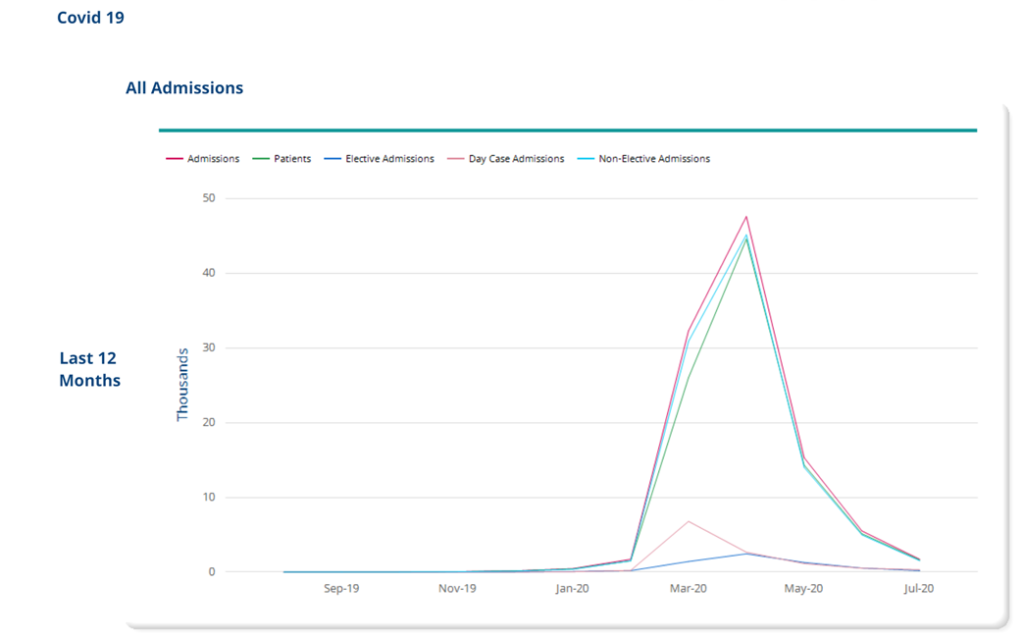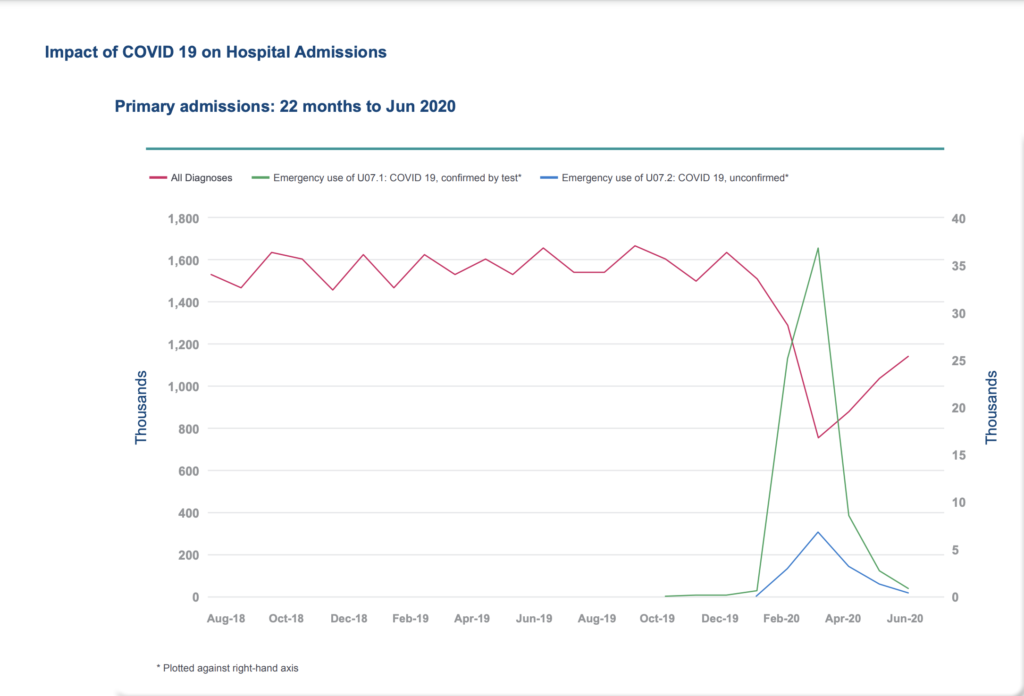It’s been a challenging and interesting time for healthcare throughout the COVID-19 pandemic.
Now that the HES (Hospital Episode Statistics) data for the last quarter (up until the end of July 2020) has been released, we are able to assess the impact of COVID-19 on hospital activity and the treatment of chronic and long-term conditions and diseases.
Using the clinical browsers from Meditrends, we have uncovered some compelling insights from the latest HES data set.
What does the data show?
The total number of hospital admissions between July 2019 and July 2020 was 16.1 million – this is down 2.6 million compared to the previous year (July 2018 – July 2019), a reduction of 14%. Prior to COVID, admissions had been increasing by an average of 5% year on year.
Both elective and non-elective admissions were affected throughout the peak of the pandemic. Non-elective admissions were down 10% from the previous year, while elective admissions saw a 17% reduction.
These figures appear to correlate with a nationwide postponement of scheduled procedures due to the pandemic, as well as people avoiding hospitals through instruction or personal choice.

Hospital admissions peaked in April before seeing a sharp decline in June and July.
There were nearly 90,000 admissions in the 12-month period where the emergency ICD10 code for COVID was applied (U70). MAT (Moving Annual Total) admissions dropped from 18.7 million to 16.1 million between July 2019 and July 2020, a reduction of 14%. In-hospital deaths dropped 2% from 156,000 to 153,000, while deaths per thousand admissions increased from 16.2 to 18.4, an increase of 13%.

While COVID admissions rose dramatically (from 0 to 50,000 per month), the number of COVID admissions was relatively small in comparison to the decrease in overall admissions (more than 500,000). Since the number of COVID admissions has decreased almost back to zero, the number of admissions for all other conditions had not returned to a normal rate at the end of July.
Interestingly, although the number of COVID admissions reduced in June, admissions for other conditions, such as dementia, were still at a relatively low level at the end of July. It’s worth noting, however, that data provided for July does not include incomplete admissions, where a patient was still in hospital at the end of July.
To find out more, and to understand how the COVID pandemic has impacted hospital activity in your disease/therapy area, please get in touch with sarah.brooks@dice-comms.co.uk.
*Images taken from Meditrends


